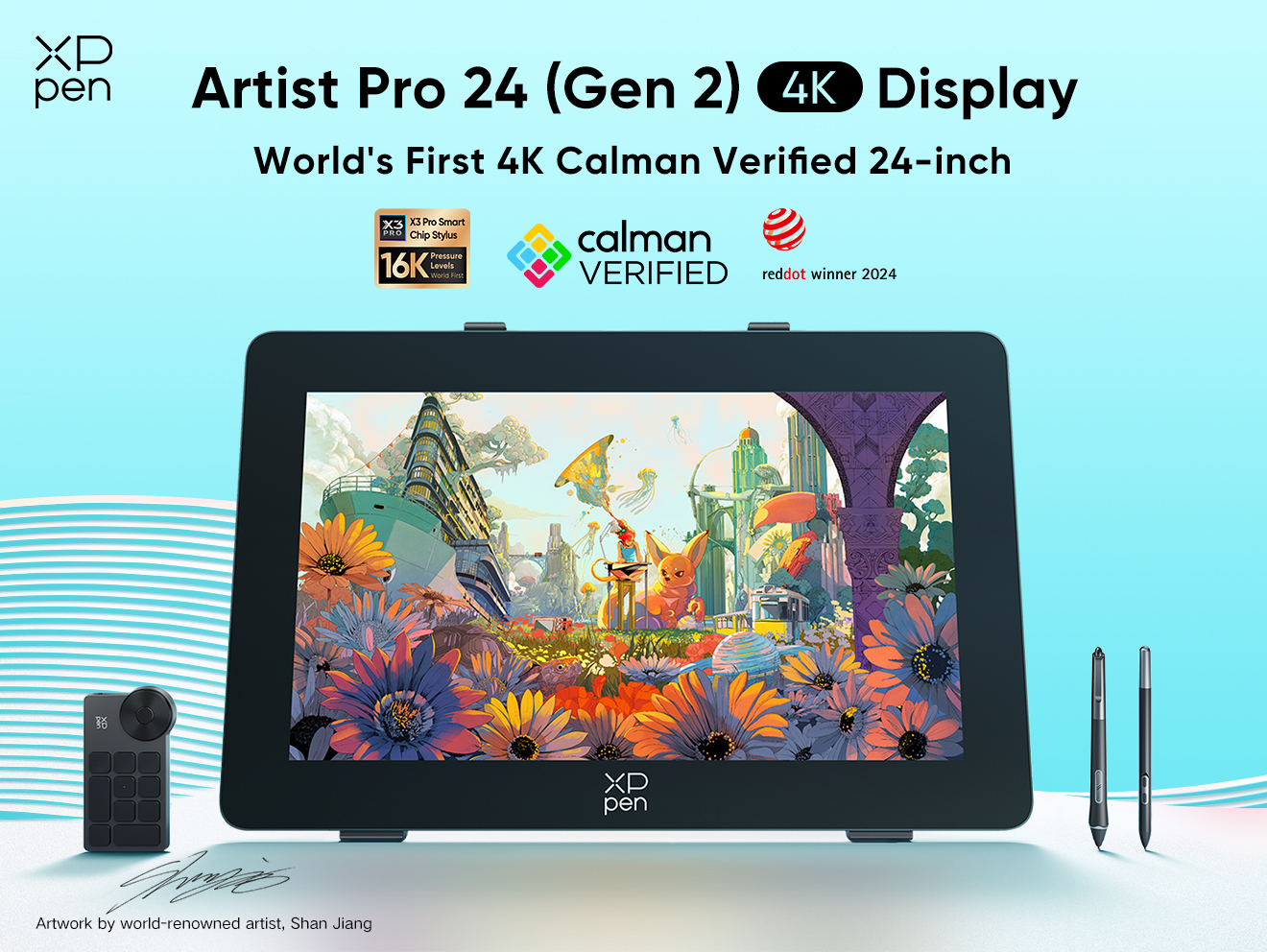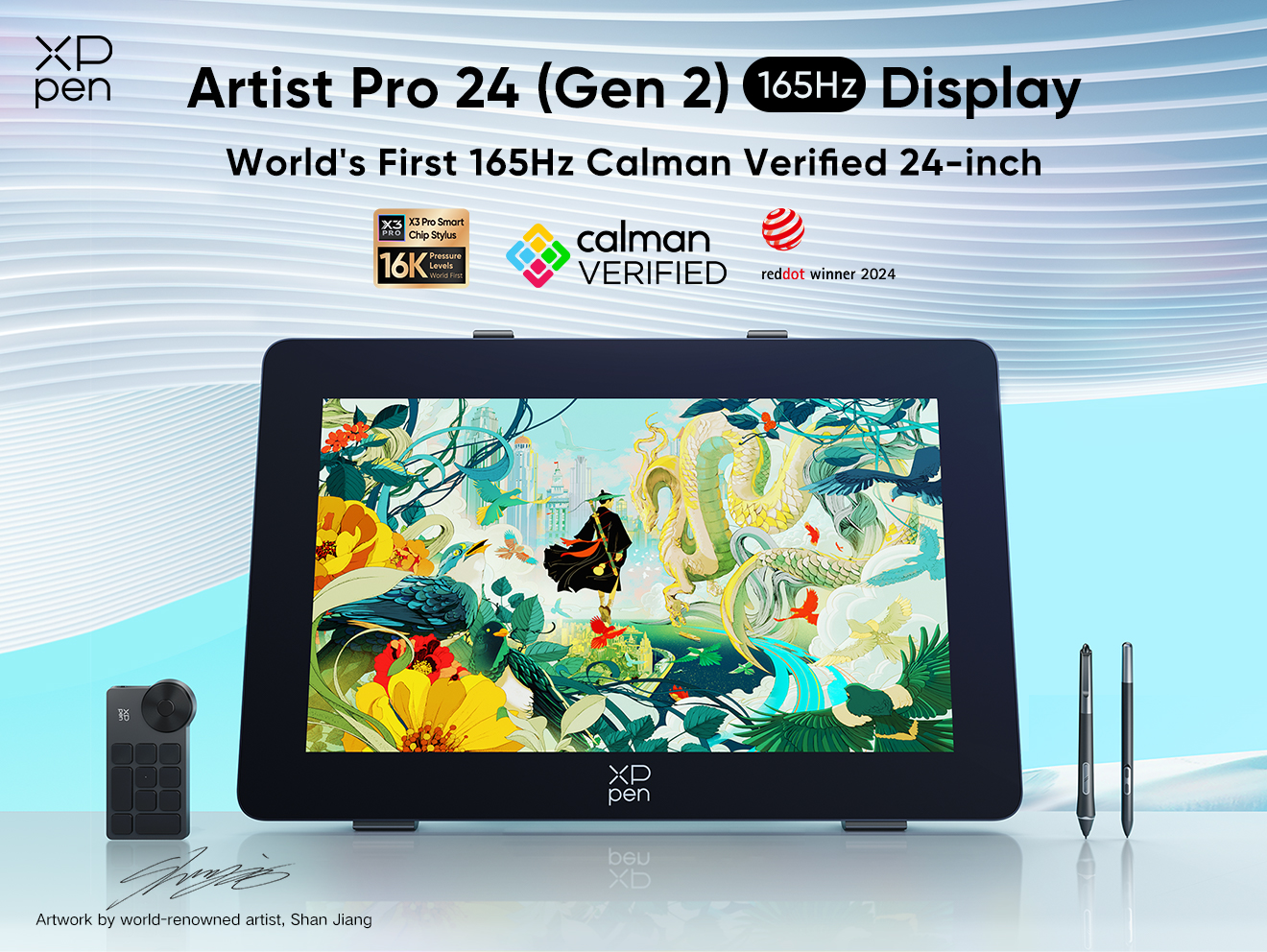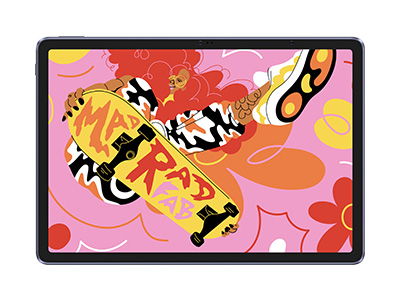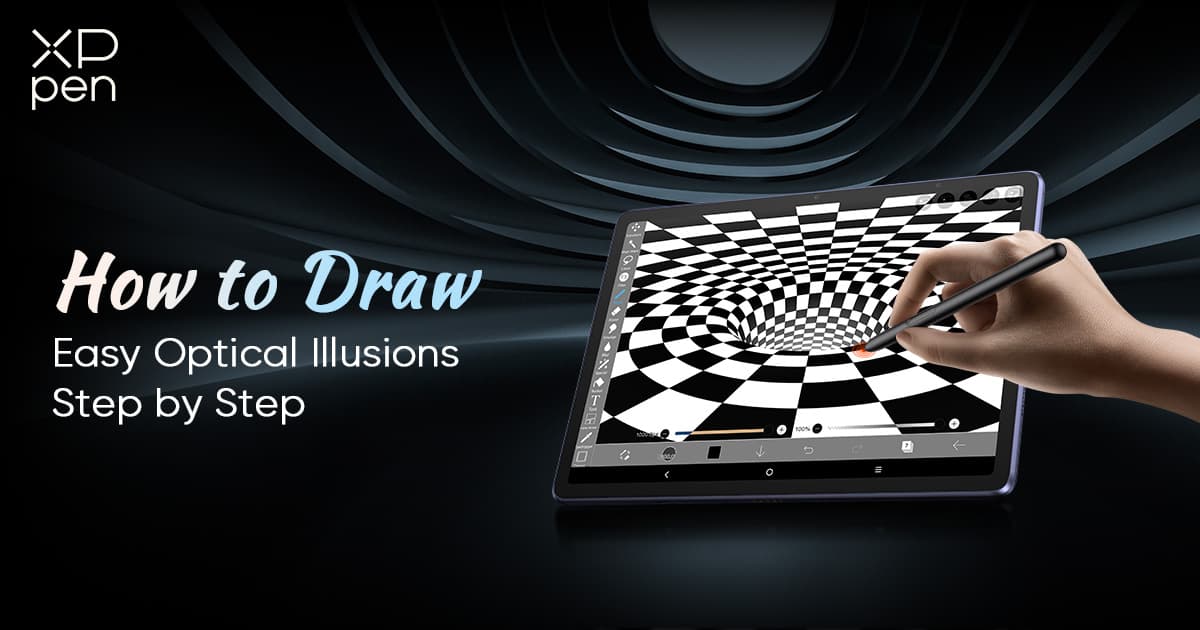
How to Draw Easy Optical Illusions Step by Step
OTHERSEver since it began, from the earliest ones that come from painting and architecture to more modern examples that can be found on social media and modern art, optical illusions have continually fascinated humankind because they just seem to defy the laws of perception and physics as we know it. This fascination still holds up to this day. However, did you know you can make these illusions using only a pen and paper? Here, we’ll discuss optical illusions and also teach you how you can draw 3 different types!
What exactly are Optical Illusions?
We need to define optical illusions before we start teaching you how to draw them. In simple words, an optical illusion would be a false perception that a thing exists but isn't. These illusions develop due to the way our brain processes and analyzes images and can, at times, create distorted or false perceptions.
Optical illusions are usually divided into three categories which include literal illusions, physiological illusions, and cognitive illusions. Physical concepts like reflection or refraction of light, can create literal illusions. The way our eyes and visual system work is the reason why this phenomenon happens in the first place. Lastly, Cognitive illusions, on the other hand, is how our minds process pictures.
One interesting literal illusion is the Ponzo illusion, in which two identical lines appear to be different lengths because of the converging lines surrounding them. This illusion originates from our mind believing the converging lines are parallel lines in the real world, and therefore misunderstanding the lengths of the two lines.
Meanwhile, a classic physiological illusion is the Hermann grid illusion, where you see dark spots where the white lines intersect on a grid of black squares. This particular illusion comes from the processing of contrast in our retinas and it is a characteristic of how the systems of our visual perceptions are wired.
This is why cognitive illusions, in turn, manipulate our beliefs about the world. A common cognitive illusion is theMuller-Lyer illusion, where two lines of equal length appear to be of different lengths because they both have arrow-like symbols at their ends. We interpret the symbols as depth cues in our brains, so we see the lines as being different lengths.
How do Optical Illusions work?
Aside from learning how to draw optical illusions easy, we also need to know their workings. Optical illusions exploit the limitations and biases of the eye. Our brains are continuously trying to interpret what we see and make conclusions in the process. However, these processes can sometimes result in optical illusions.
The brain is programmed to recognize familiar shapes and patterns, which is among the reasons optical illusions happen. Whenever we see a picture that's more or less not what we anticipated or even one that's not consistent with what we assumed, our brains can not understand the picture properly and see a visual illusion. For example, in the impossible triangle illusion, our brain attempts to understand the impossible angles and contacts as a three-dimensional object, but this is the complete opposite of our current knowledge of perspective and geometry, leading to an optical illusion.
Another cause of this phenomenon is the way our brains process depth, contrast, and color. Our eyes are made to sense light and the change of color but can sometimes be fooled by certain combinations of colors or patterns that create illusions of depth or motion. The cafe wall illusion, where the mortar lines between the tiles look slanted or curved, is a good example of how our brain perceives contrast and color in order to manifest illusions inside our minds.
Notice that optical illusions are not just visual gimmicks or tricks; they actually occur. They shed light on how our brains and eyes work. By studying these illusions, scientists and researchers can better understand how perception, cognition, and visual processing occur.
How to Draw Optical Illusions Step-by-Step Tutorial
Now we know what optical illusions are and how they work, let’s learn how to draw optical illusions step by step! Here are how-to instructions for three types of optical illusions. First, we’ll tackle a 3D Hole Optical Illusion, and then the Impossible Oval, and lastly, the 3D Triangle Optical Illusion.
1. Step by Step Tutorial on How to Draw Optical Illusion: 3D Hole
This optical illusion makes a flat surface appear as having a large, three-dimensional hole. It's an obvious example of a literal illusion, where the physical properties of the image fool our brains into thinking there is depth.
Step 1: First, draw a small circle and a large ellipse, with the small circle located below the ellipse.
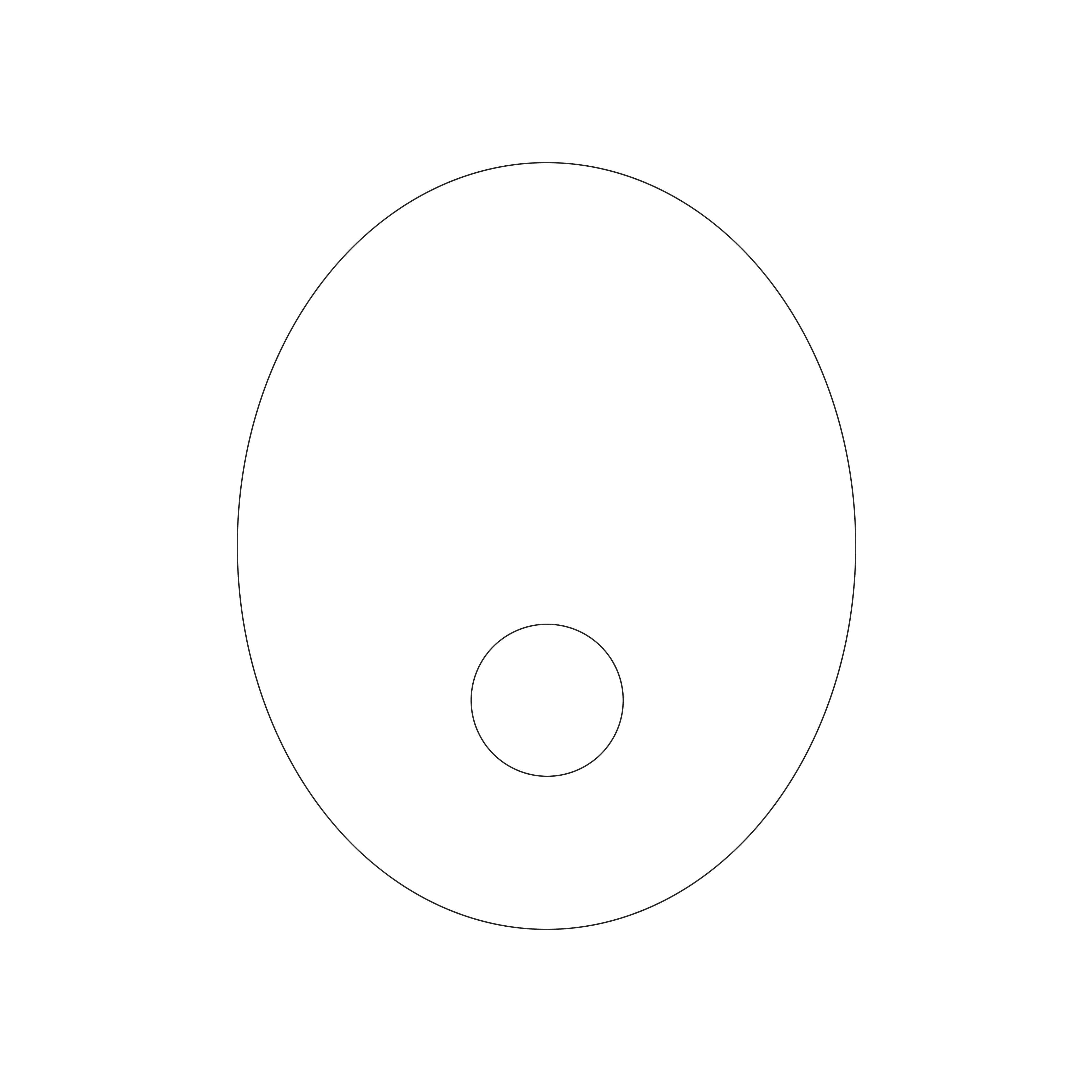
Step 2: Draw several ellipses that increase in size from small circles to large ellipses, with increasing spacing.
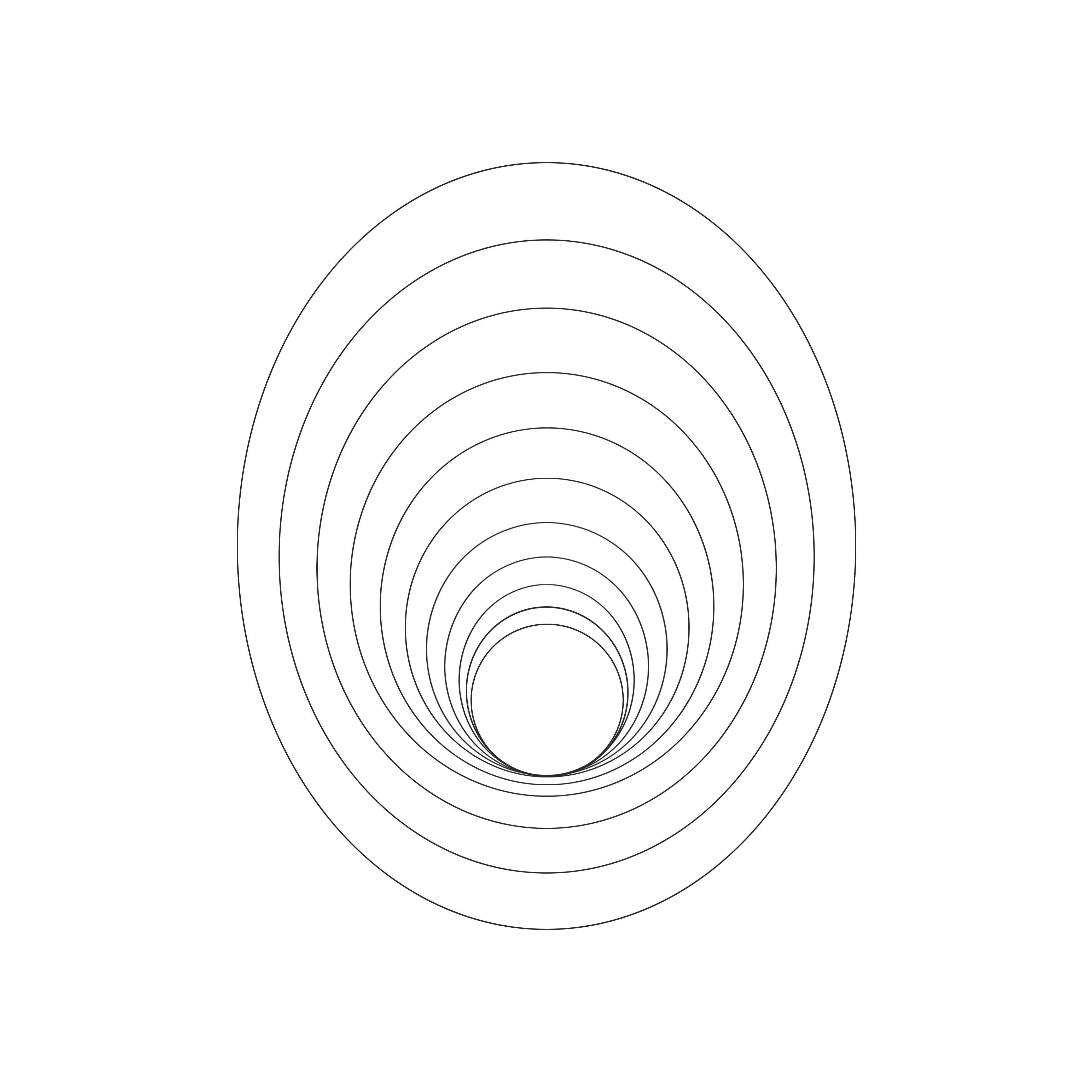
Step 3: Then draw a point perspective ray, and use the spherical effect of the filter to make it look like it is bulging outward.
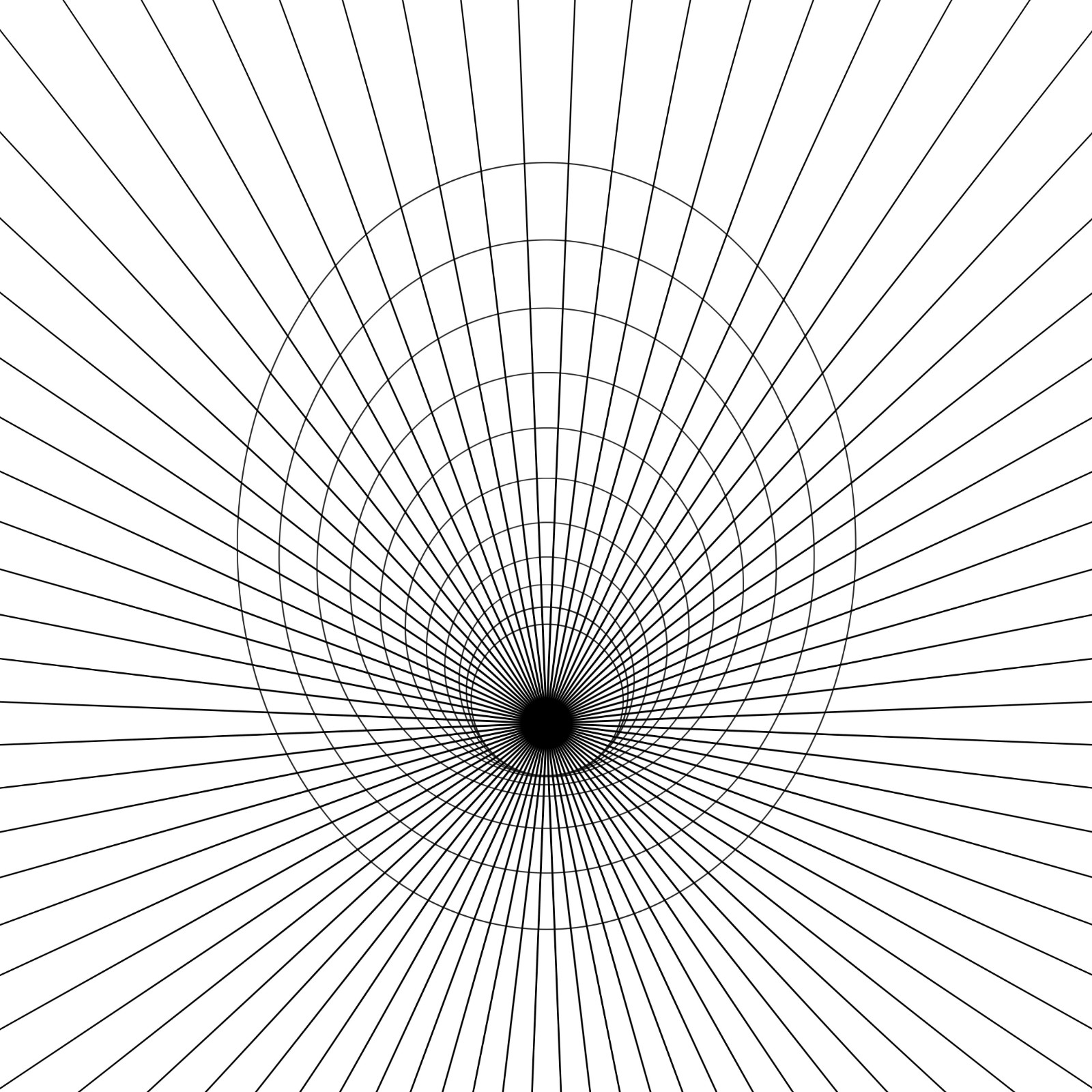
Step 4: Block the extra rays outside the ellipse, and fill the black blocks in an orderly and staggered manner. You can copy and flip the color to fill one side first, and then fill it up, which can save half the time.
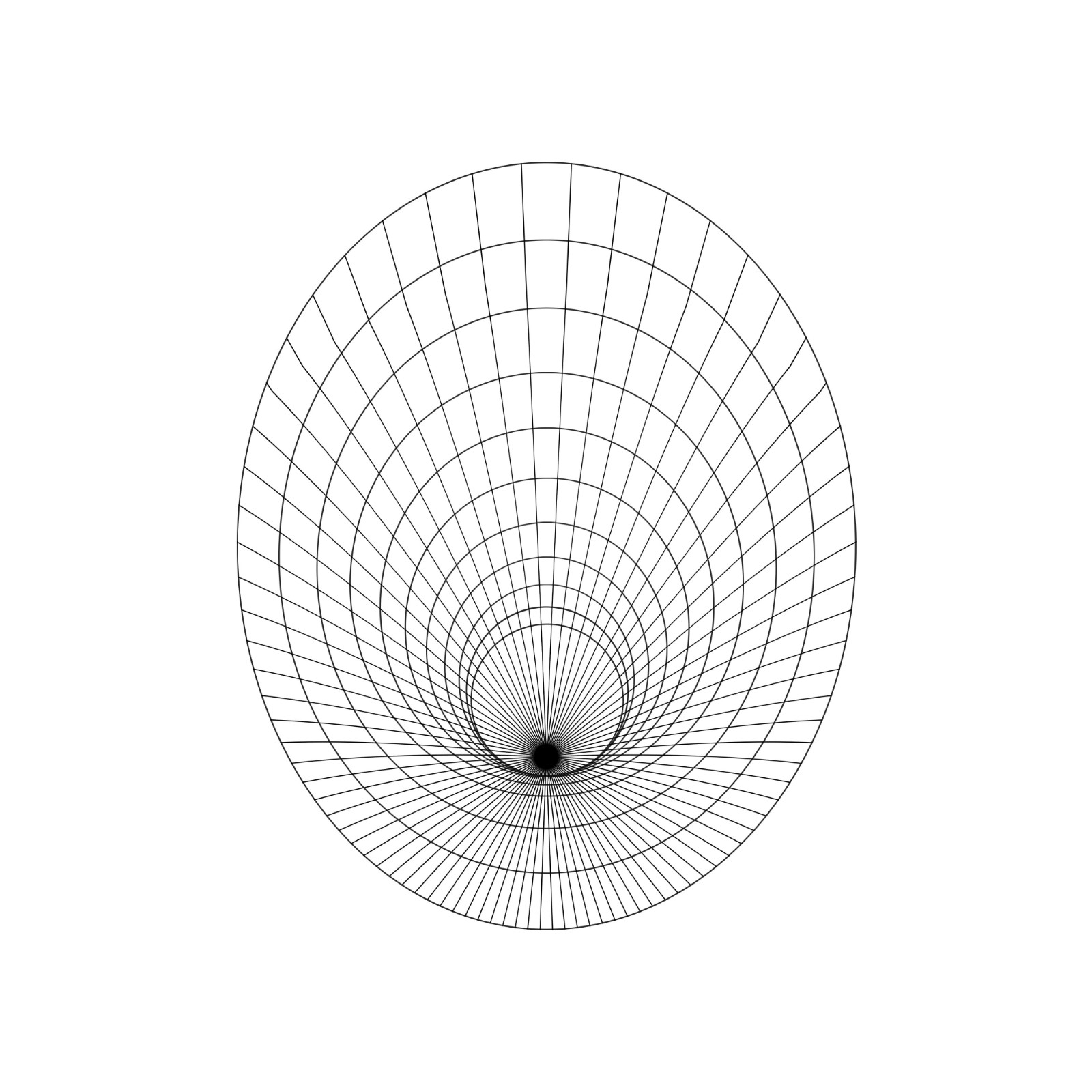
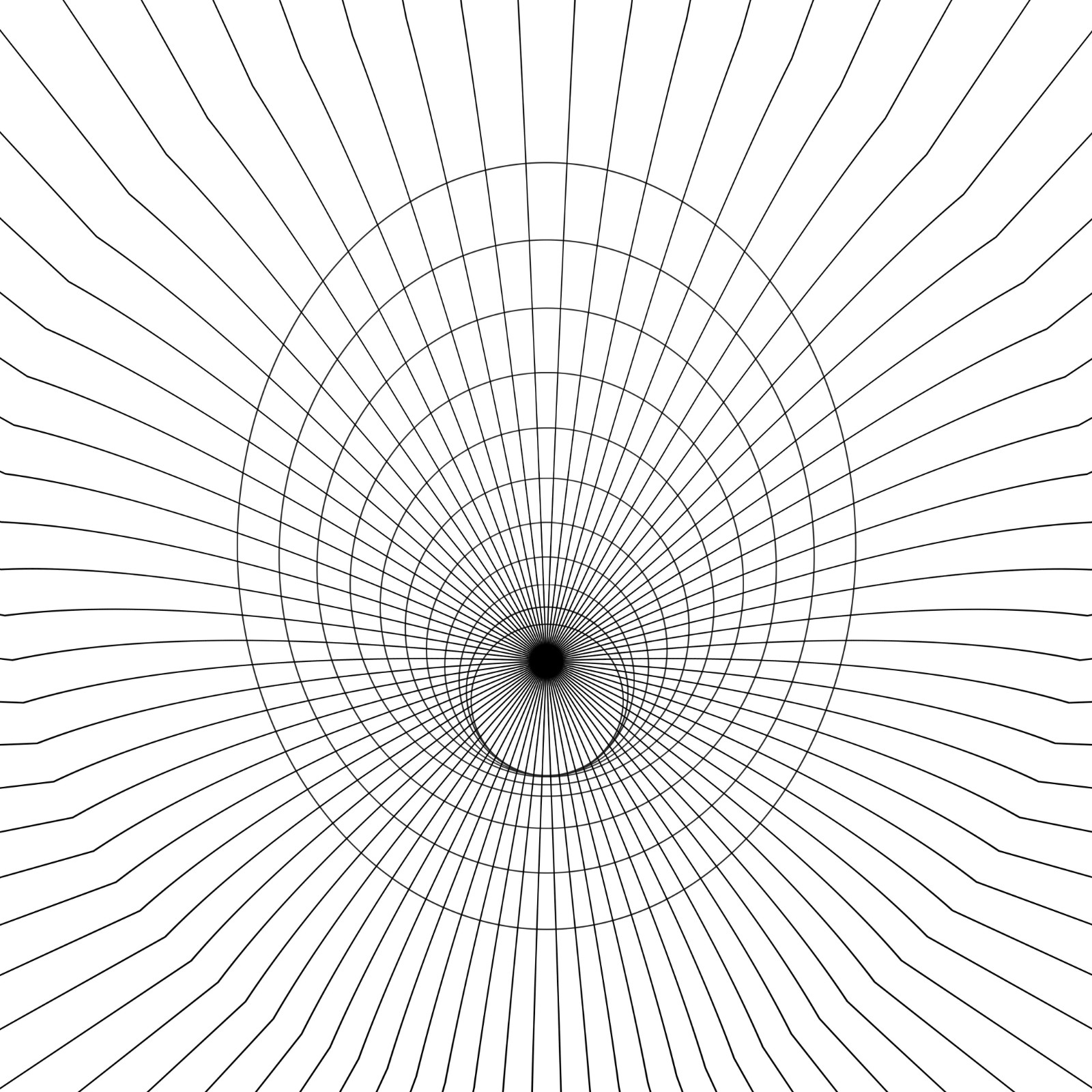
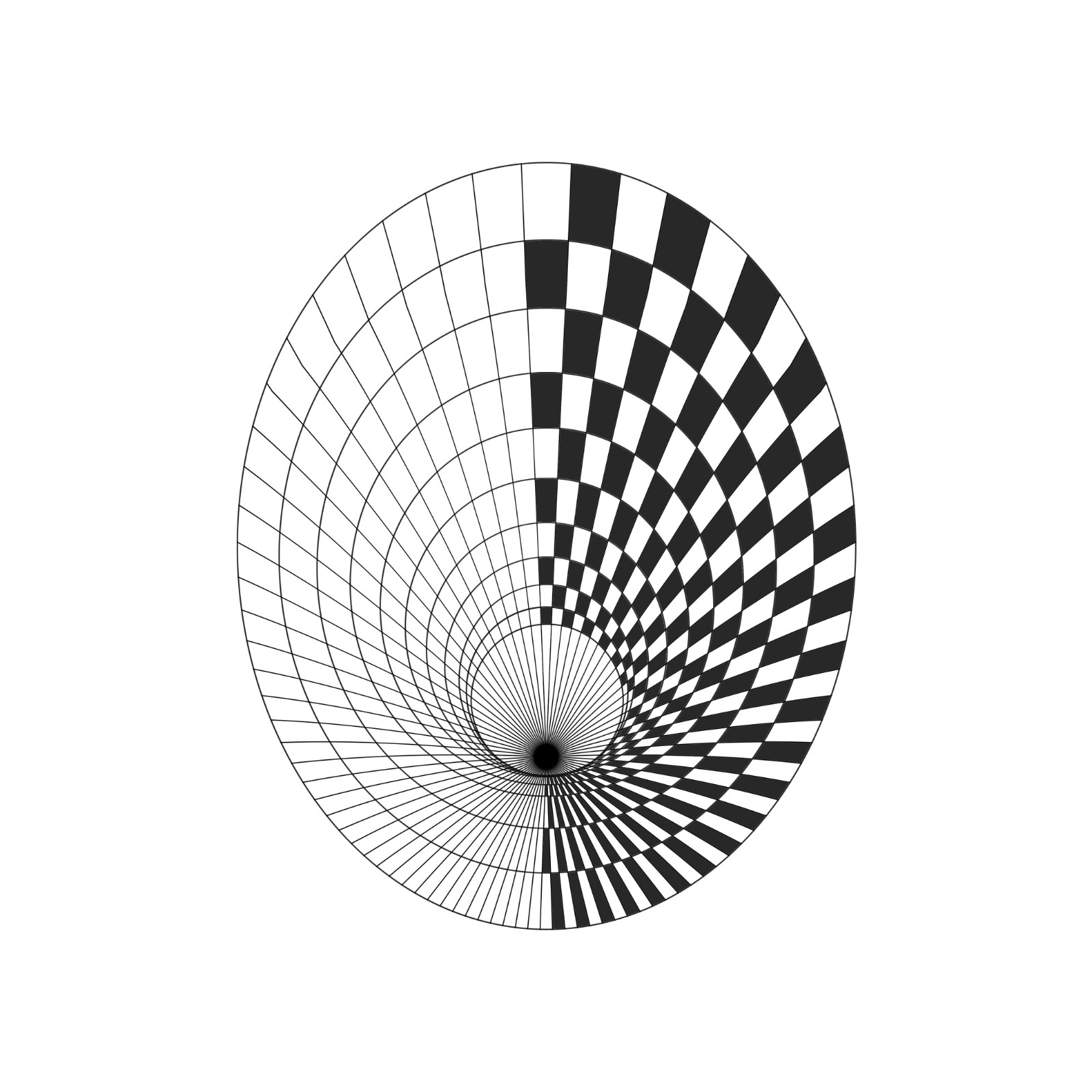
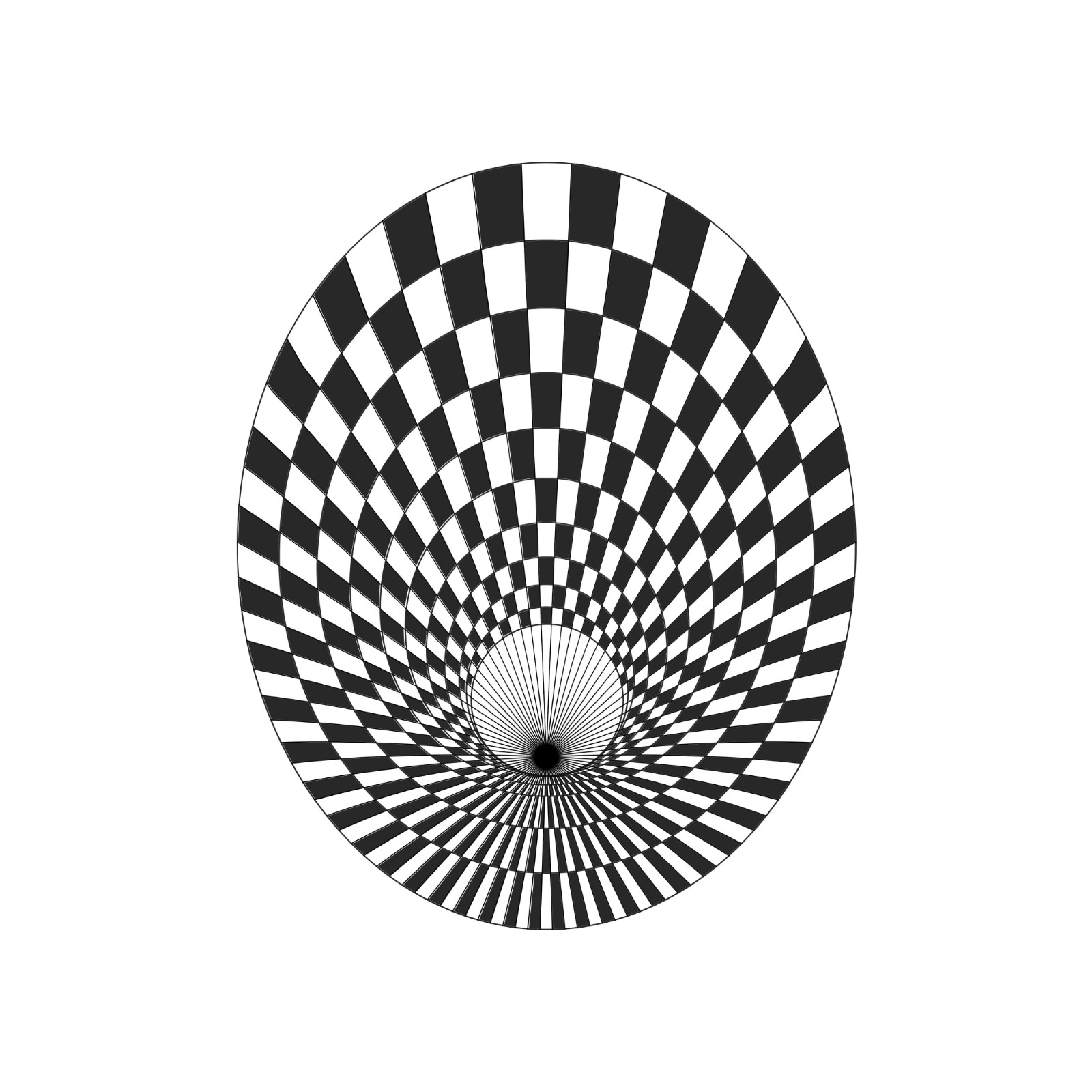
Step 5: Finally, draw large color blocks from the smallest circle, and reduce the transparency of the larger ellipse, and finally blur them, remove the line drawing, and it is completed!
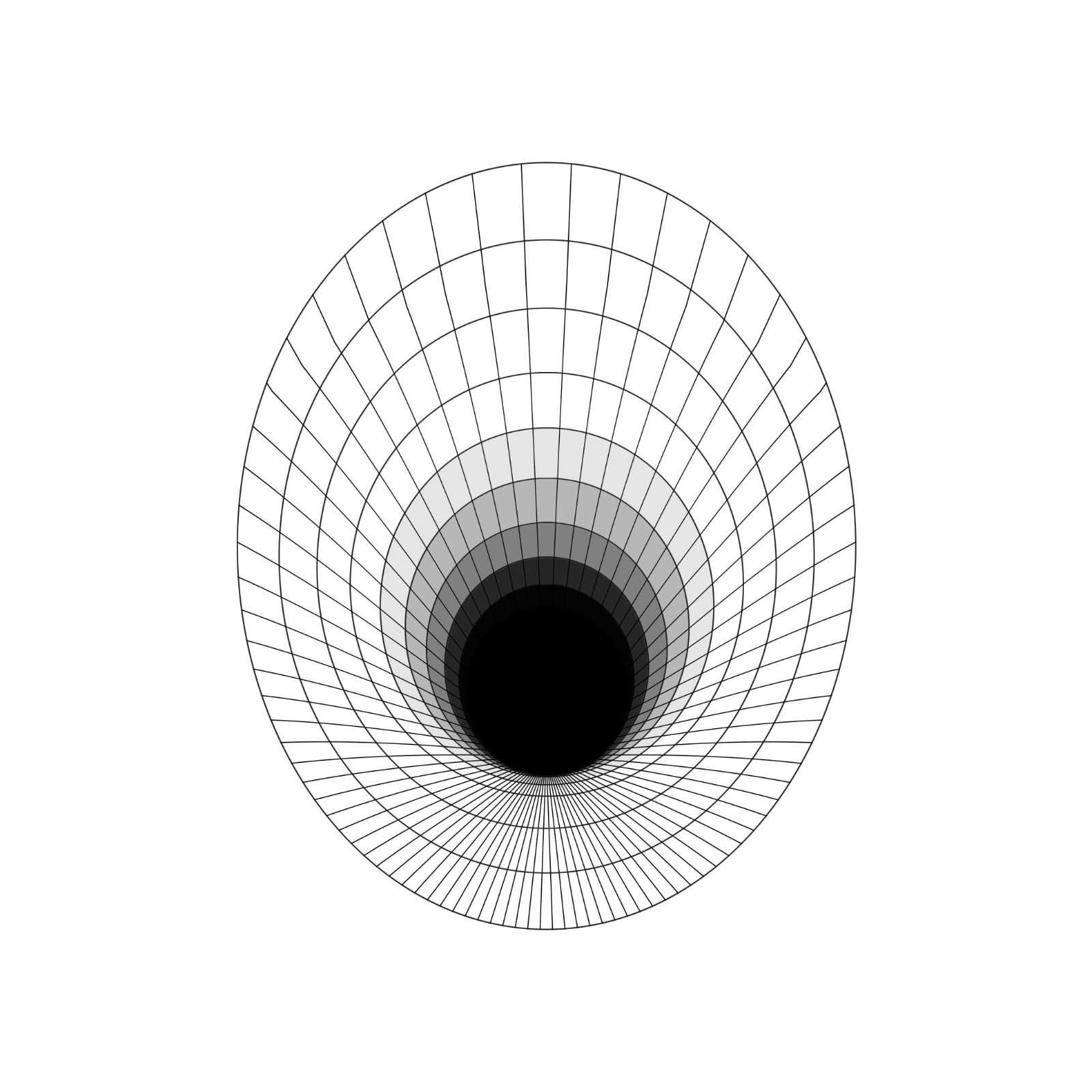
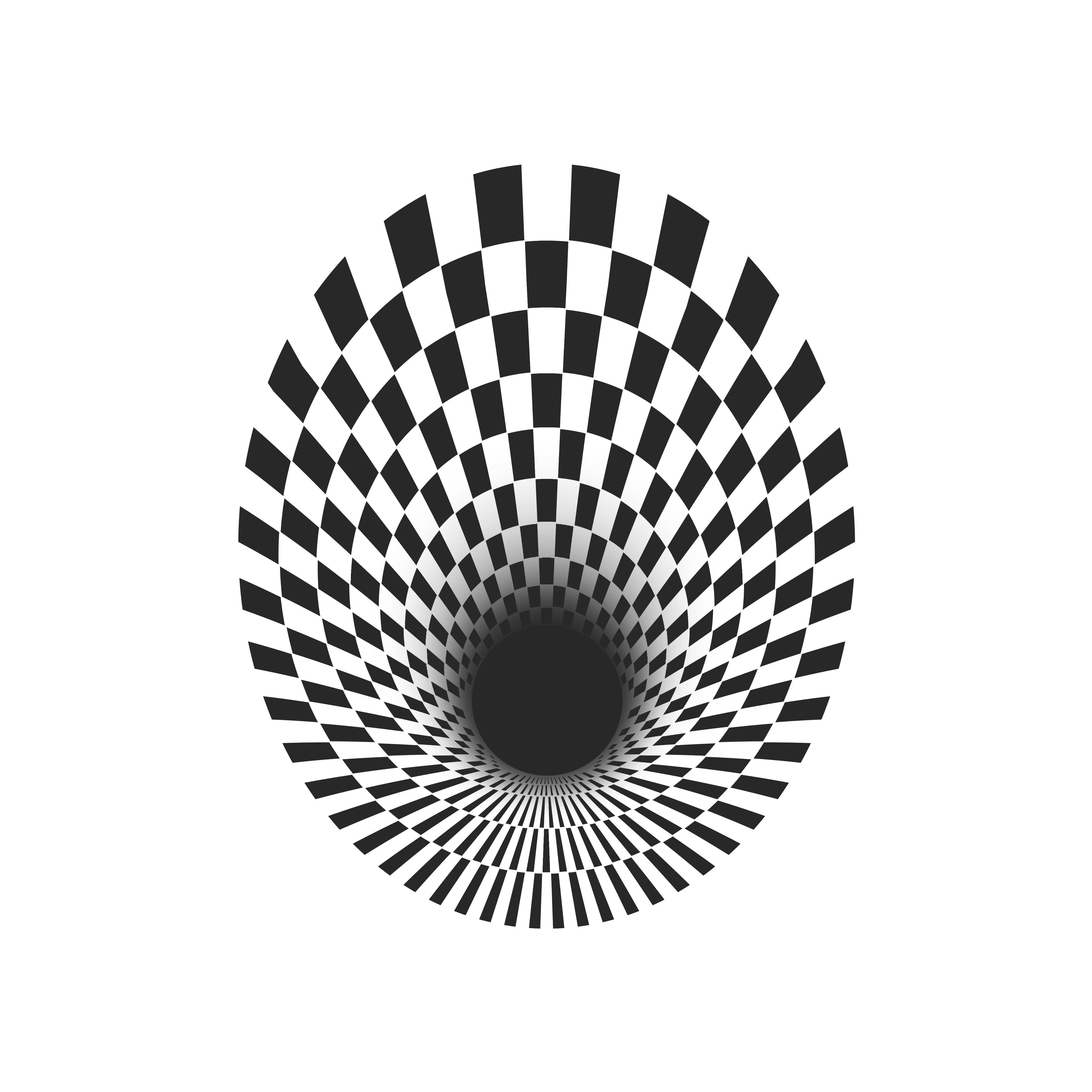
This illusion plays on our brain's preconceptions of depth and perspective. The circular ellipses and the checkerboard provide the impression of a spiral tunnel and the shading in the middle gives the entire result a more realistic sense of depth. We all know logically that a drawing on a flat surface is simply a drawing but at an angle, our mind interprets the flat picture like a three-dimensional hole.
2. Step by Step Tutorial on How to Draw Optical Illusion: Impossible Oval
This next optical illusion called the Impossible Oval belongs to the cognitive illusions, where our brain can not make sense of the shape we've made.
Step 1: First, draw an almond-shaped oval and two dots, one on either side of the shape.
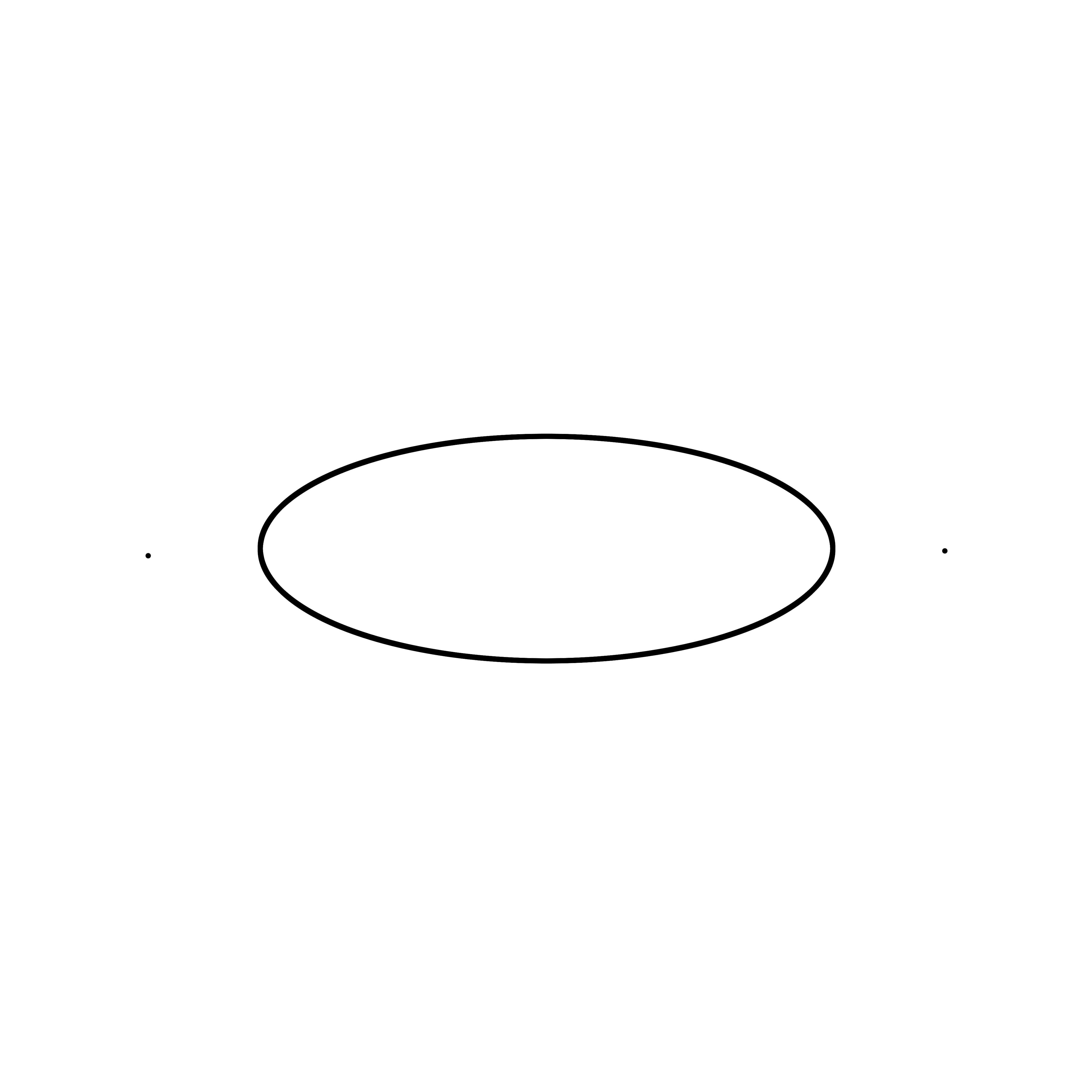
Step 2: Next, draw a short line down from the left dot and a short line up from the right dot.
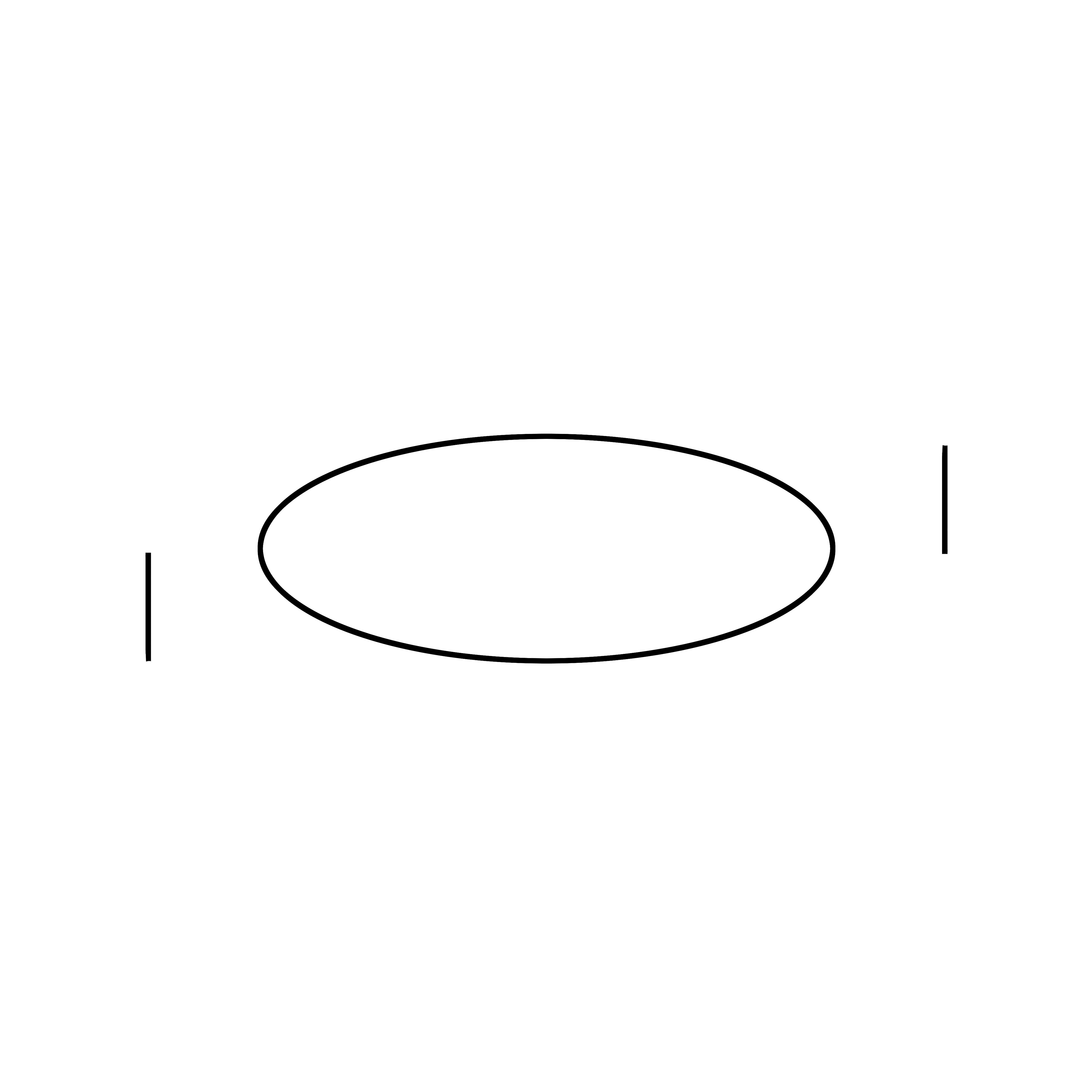
Step 3: Connect these lines and draw a continuous circle around them. In this step, you will finally get a glimpse of the impossible shape.
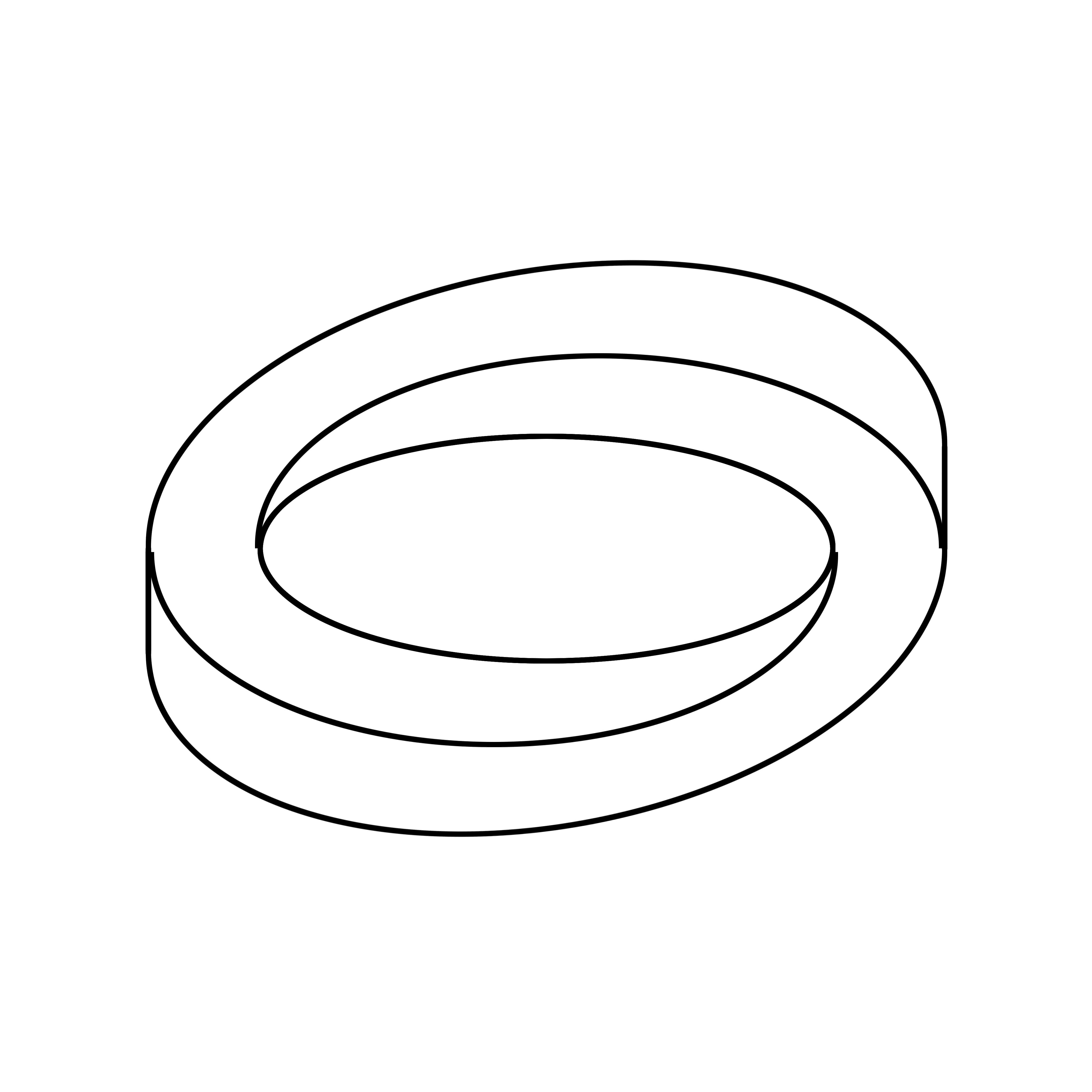
Step 4: Erase any overlapping lines or imperfections to create a smooth, continuous shape.
Step 5: Add the shading. By adding darker shading to the inside of the shape and lighter shading to the outside, the process will give it a very realistic three-dimensional appearance.
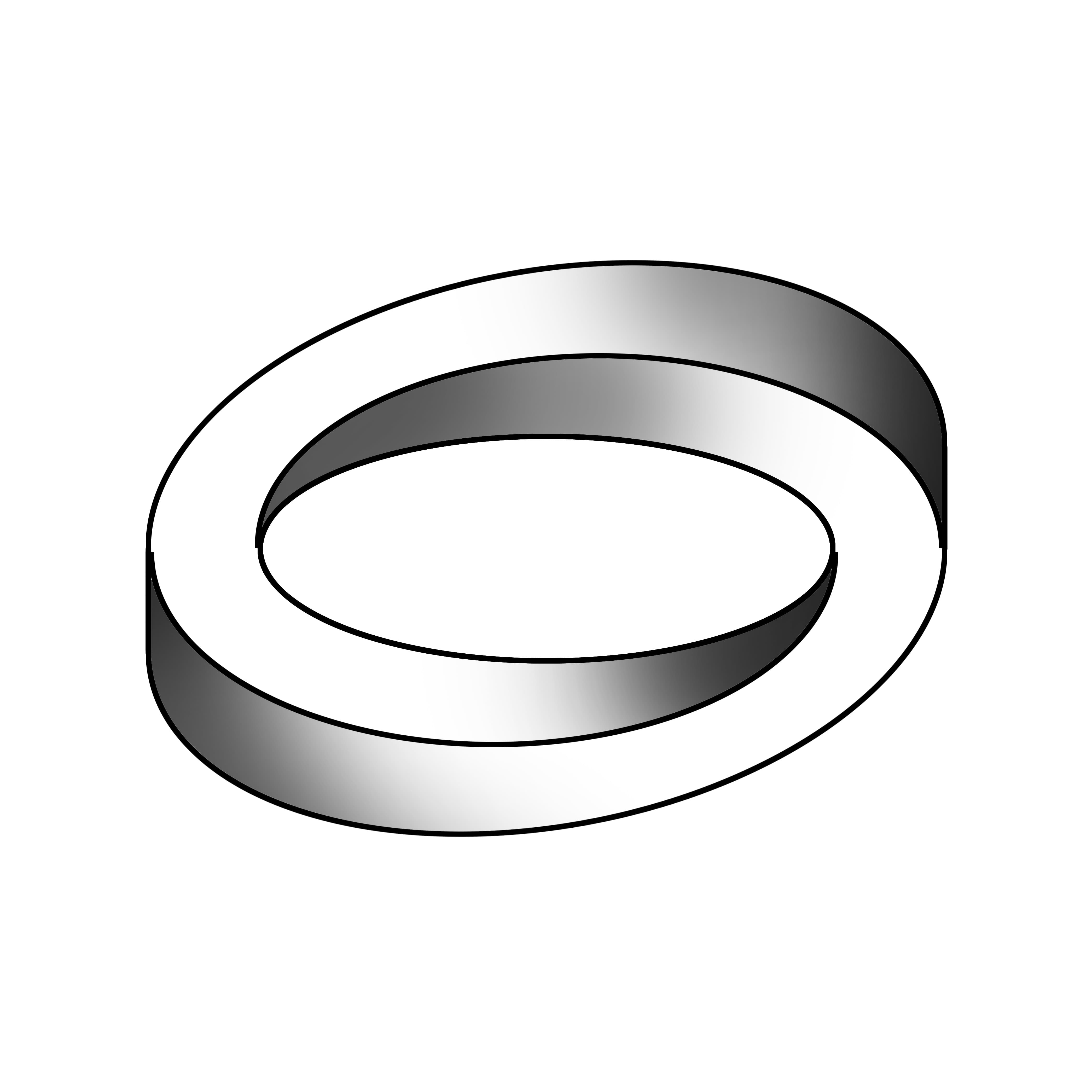
When you see this illusion, your mind will attempt to interpret it as a three-dimensional object but the shape will make it hard, leading to a very visual and twisted effect.
The impossible oval illusion violates our brain's expectations of how objects should be arranged in three-dimensional space. We can easily see two-dimensional shapes such as circles and ovals, but in this illusion, our brains can not make sense of the impossible loop formed by the curved lines. The shading further enhances the effect, giving the impression that the shape has depth and volume, though such an object would be physically impossible to build in the real world.
3. Step by Step Tutorial on How to Draw Optical Illusion: 3D Triangle
This last optical illusion is a typical representation of an impossible object, in which the laws of geometry and perspective are allegedly violated.
Step 1: First, create a horizontal line, copy it counterclockwise and rotate it 60 degrees with the leftmost point as the center point to form an isosceles triangle.
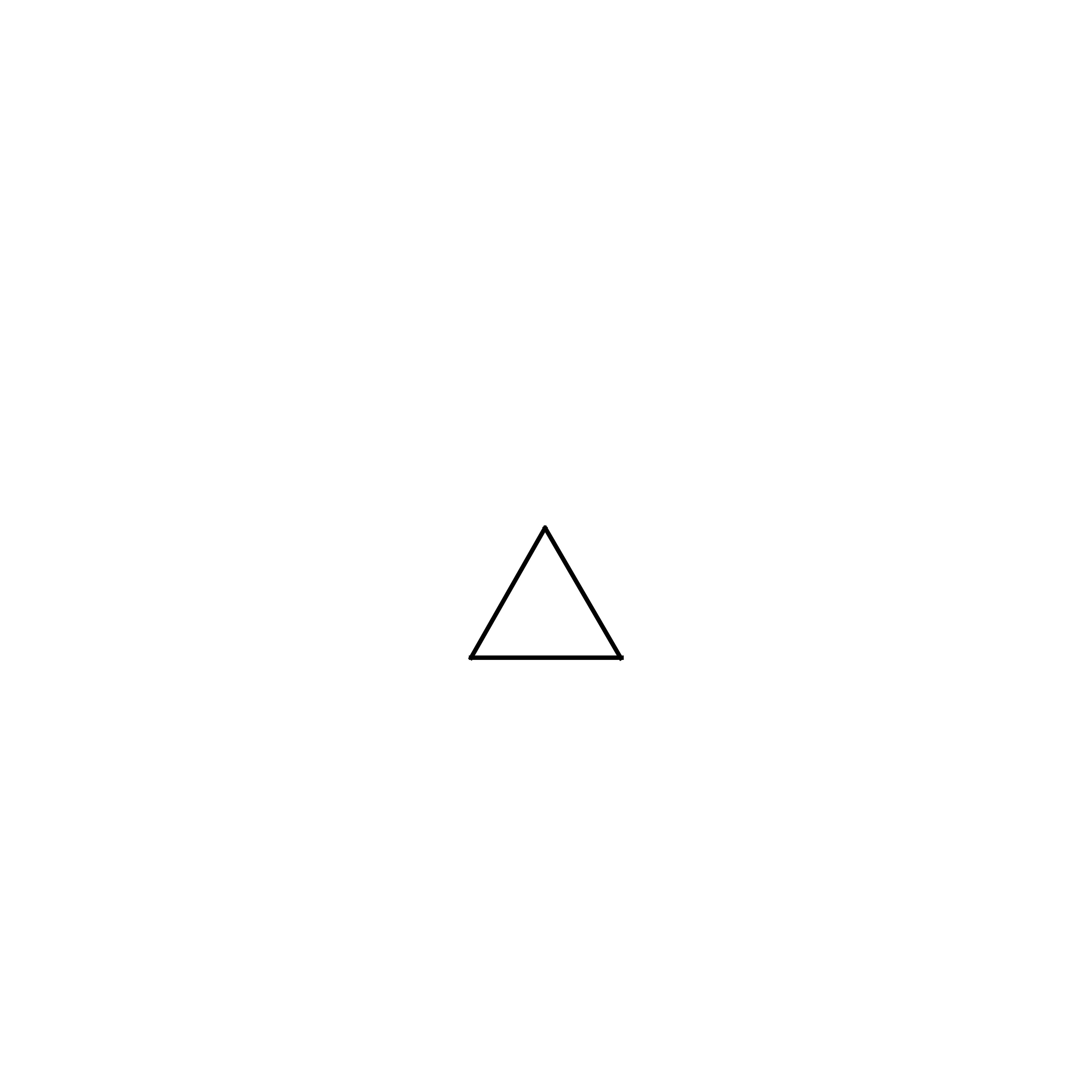
Step 2: Extend one end of them to the same length, like a spiral fan.
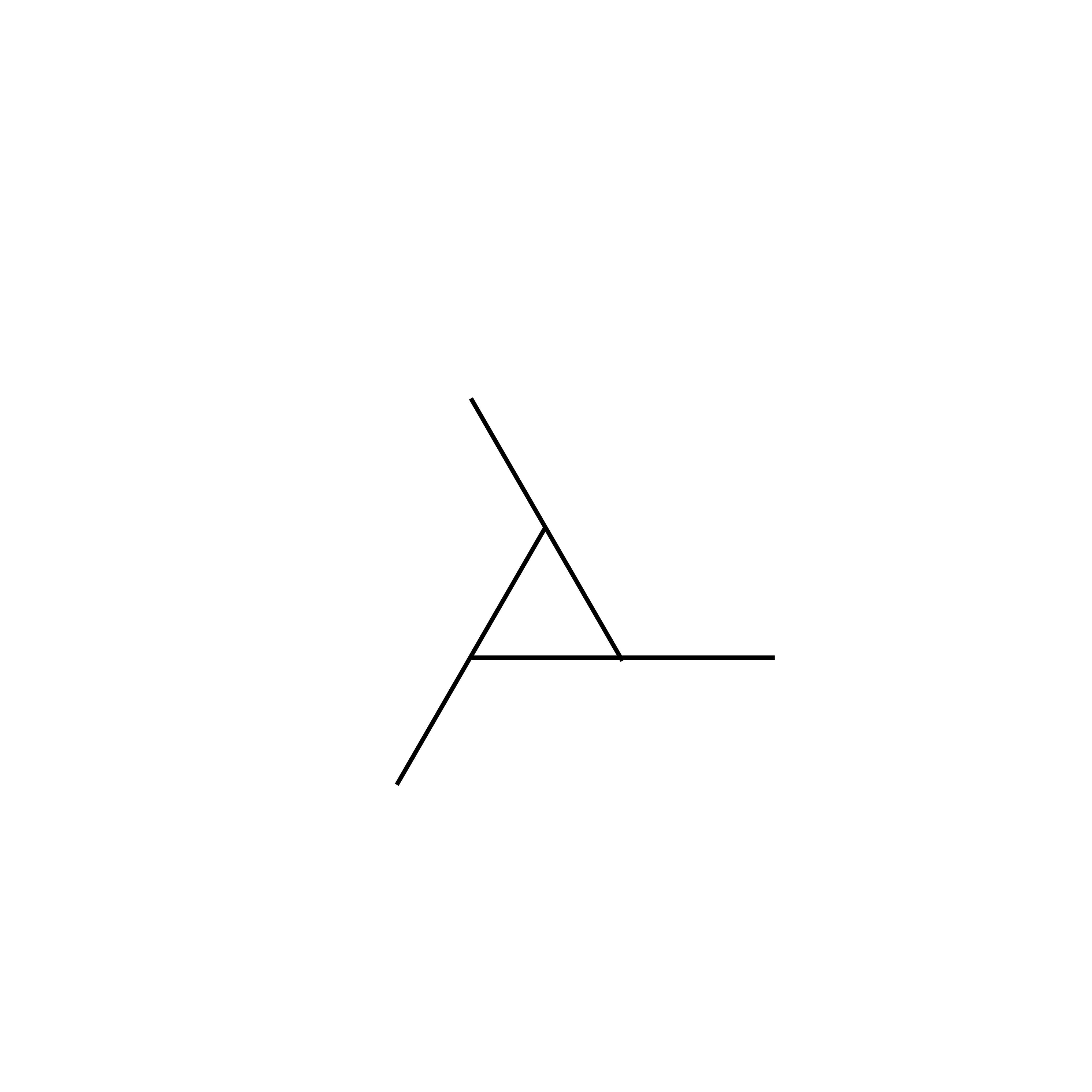
Step 3: Then continue to extend the same length in the same way and in the same direction of rotation. After repeating it several times, it becomes a cubic prism with a rudimentary triangle.
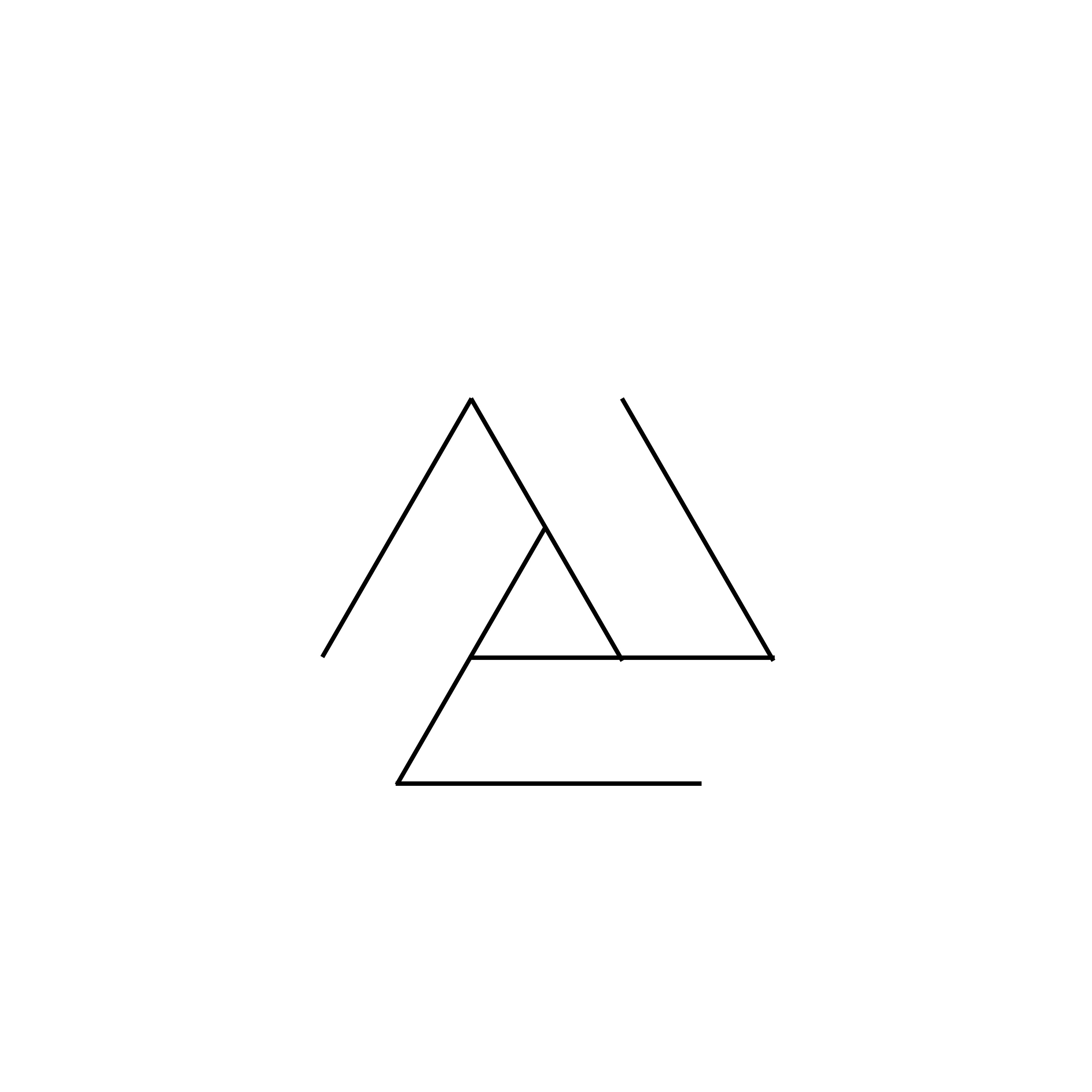
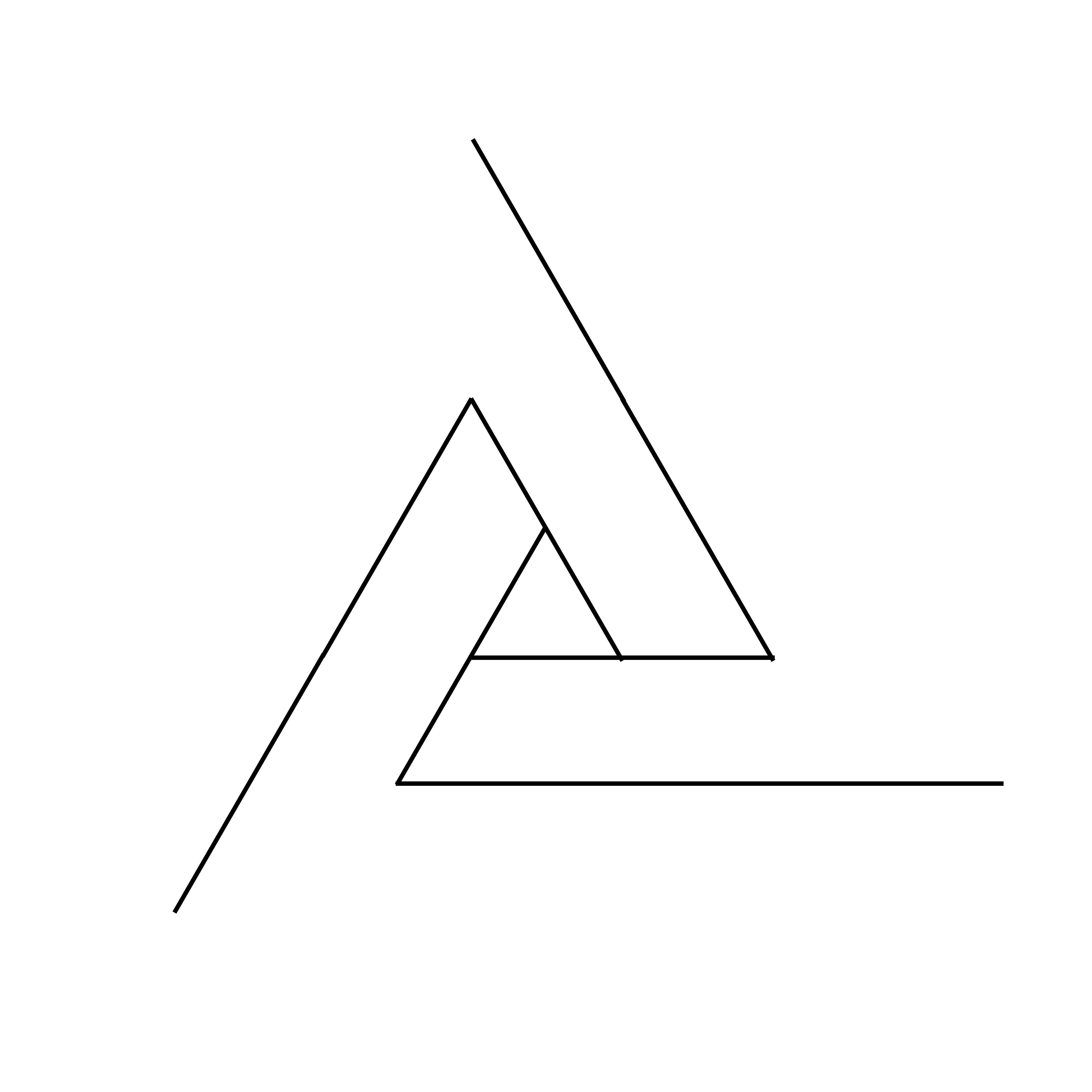
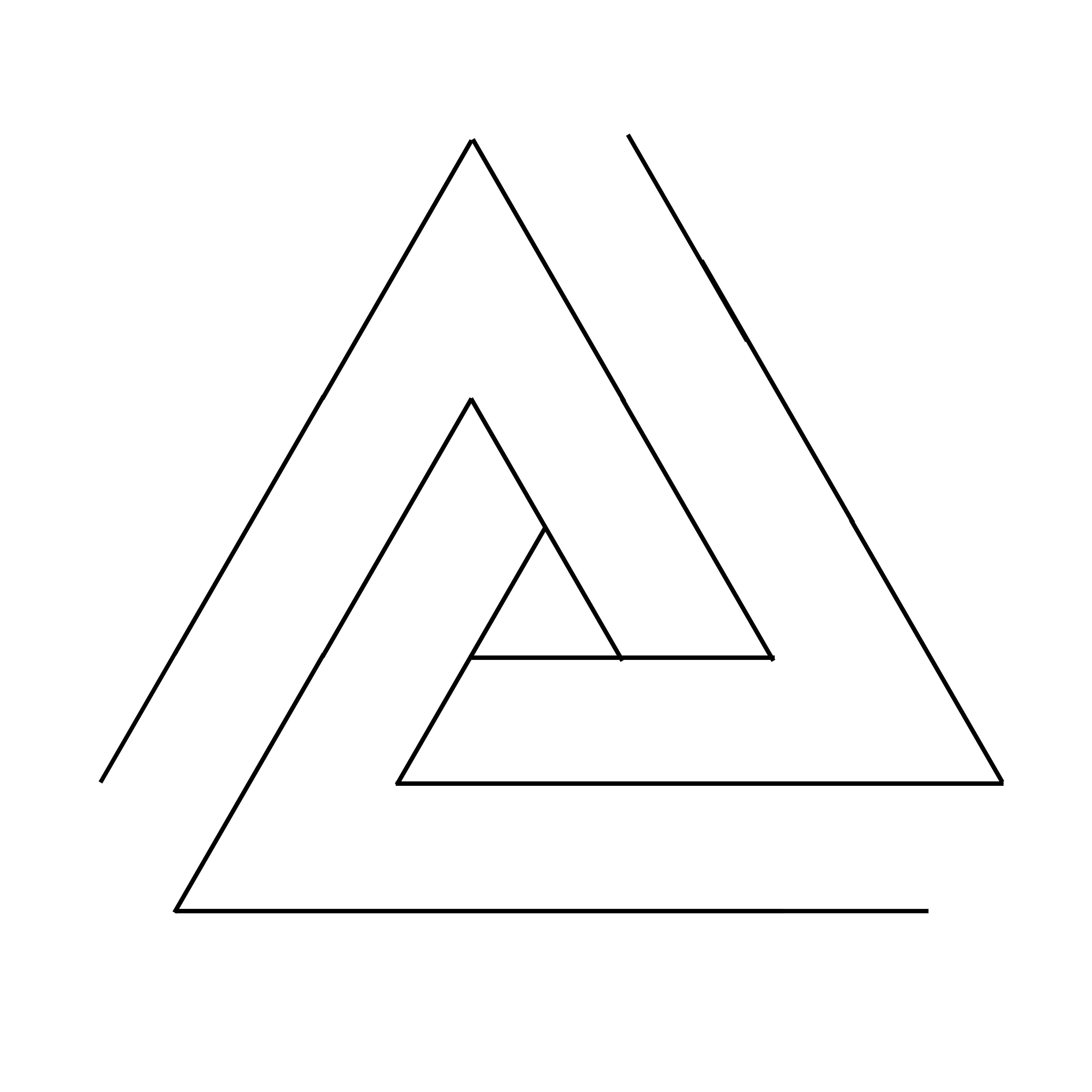
Step 4: Close the gap on the outside to form a complete and incredible 3D triangle.
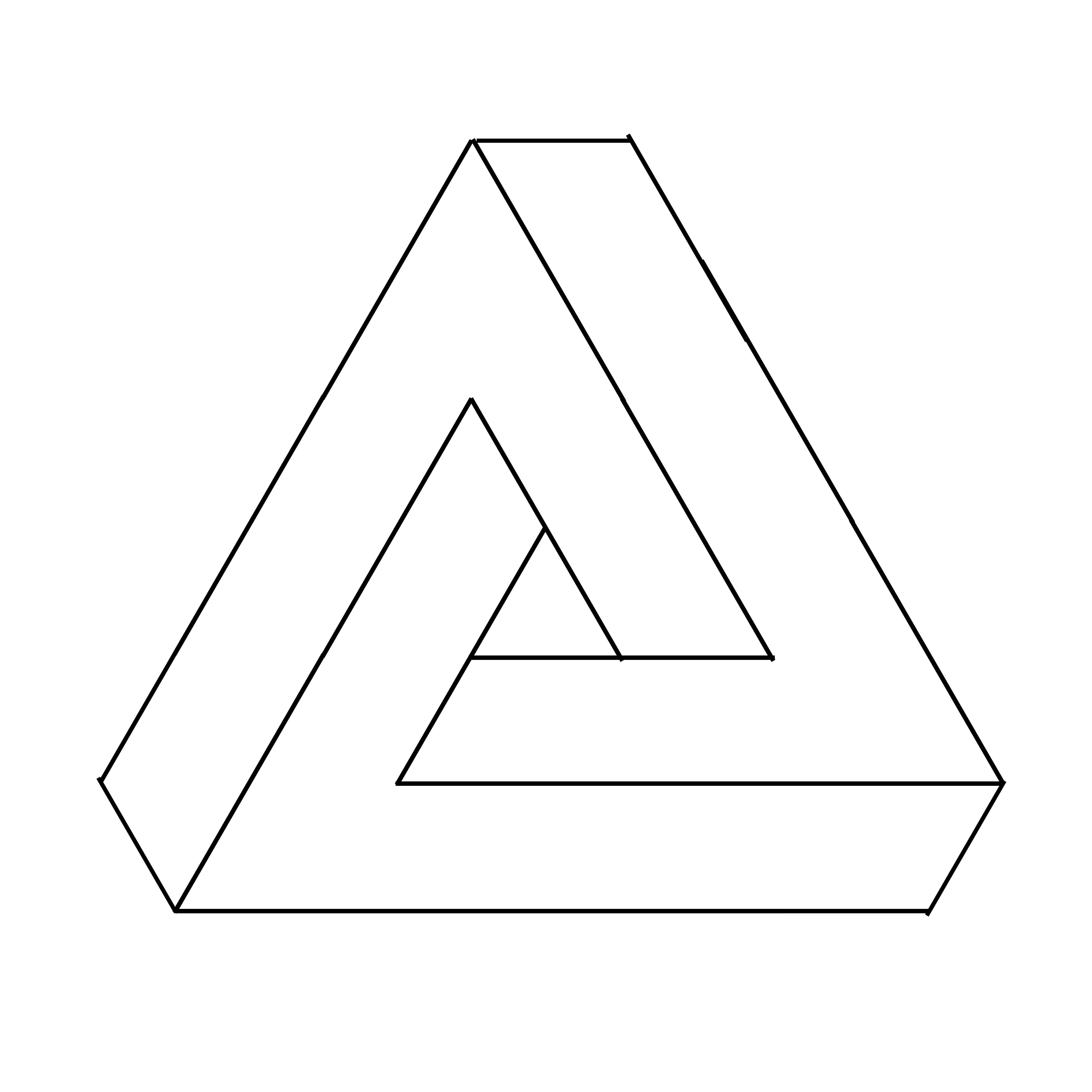
Step 5: Fill a base color and add a lighter shadow on the outer surface to draw a 3D triangle.
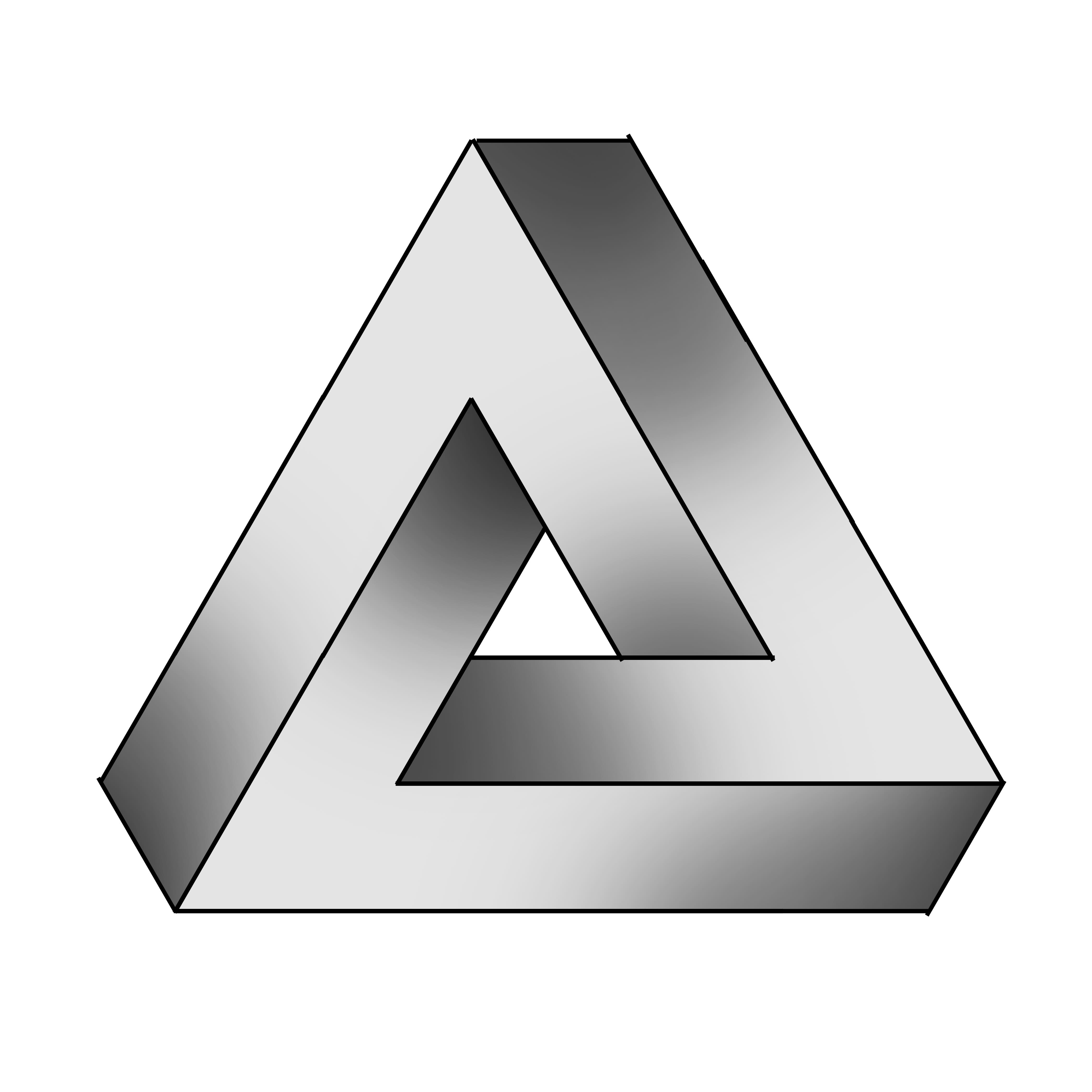
When you see this illusion your brain will want to think of it as a three-dimensional object but the unsolvable angles and connections will make a visual paradox that defies logical perception.
The impossible triangle illusion is an example of how the brain tries to reconcile contradictory visual information. Although the constituents of the drawing including the lines, shading, and angles are all logical in themselves, when mixed together, they form a shape that can not be constructed in three-dimensional space. We try to read the drawing as a solid form with contradictory angles and connections; the result is a visual paradox that our brains can not resolve.
This illusion reveals the limitations of our visual system and the assumptions and knowledge that our brains rely on. We know logically that these kinds of shapes can not exist, but our brains are still trying to make sense of them, resulting in an interesting and sometimes mind-blowing image.
Along with the step-by-step directions previously mentioned, practicing and trying out various methods and styles can help you achieve even more impressive optical illusions. Don’t be afraid to experiment with colors, shading, along with any other geometric forms to see what visual effects you can make. That finishes our tutorial on how to draw optical illusions step by step easy.
Bonus Tip: Which Drawing Tablet is Best for Optical Illusions
While you can certainly do optical illusions with a pen and paper, a drawing tablet can take your illusion-drawing skills to another level. Without a doubt, the XPPen Magic Drawing Pad is one of the best that’s available on the market today.
The XPPen Magic Drawing Pad is a 2-in-1 Drawing and Android tablet. This means you can draw and make optical illusions anywhere, without the tablet being plugged into a computer. The tablet has 16,384 pressure levels which is enough to capture even the smallest differences in pressure for accurate shading and line work, a key component for creating convincing optical illusions.
However, what really sets the XPPen Magic drawing Pad apart is its AG Etching Display, which mimics the natural resistance and feeling of paper, giving you a more comfortable Drawing experience. This can be especially helpful when creating complex optical illusions that involve you working for hours on end with a lot of precision.
Additionally, the battery-free EMR pen lets you draw without charging up, so you are never interrupted.
With the powerful Octa Core processor embedded inside it, the 2160x1440 resolution display, and its light weight of only 599 grams, the XPPen Magic Drawing Pad is a portable and powerful tool to take your optical illusion creations to new heights. Whether you're shading detailed models, doing line work, or trying out different color schemes, the tablet's high-end display and processing power will make for a smooth drawing experience. At only USD 499.99, the XPPen Magic Drawing Pad is a great investment for artists and designers of all skill levels, whether you’re a beginner or a pro.
Video tutorial
Conclusion
Optical illusions are interesting to see and fun to make. Read the steps given in this article to unleash your inner magician and perform these mind blowing illusions on your family and friends.
Remember that the trick to successful optical illusions is to learn how our brains process visual information and exploit those limitations and biases, as well as check out tutorials like this one where we tackle optical illusions how to draw. Whether you're making a 3D hole illusion, an impossible shape, or a geometric paradox, the art of drawing and shading is essential to the final result.
If you want to really master drawing optical illusions, invest in a good drawing tablet such as the XPPen Magic drawing Pad. This tablet has a lot of advanced features and offers an intuitive drawing experience for every drawing task, not just illusions.
So what are you waiting for? Grab your art supplies or your XPPen Magic Drawing Pad, and dive into the world of optical illusions. Maybe you can pull off the next viral illusion that everyone is scratching their head at! You might even be able to learn how to draw moving optical illusions.
About Us
Originated from 2005, XPPen is now one of the top brands under HANVON UGEE, integrated with digital drawing products, content and service as a globally notable digital brand of digital art innovation.
Learn moreRecommended Articles
ANIMALS How to Draw a Cute Dog Step by Step (Cartoon & Realistic Styles) OTHERS How to Draw Stitch with XPPen - Step-by-Step Guide OTHERS How to Draw Tattoos with Drawing Tablet [Complete Guide] OTHERS How to Draw a Human Head with XPPen Drawing Tablet


